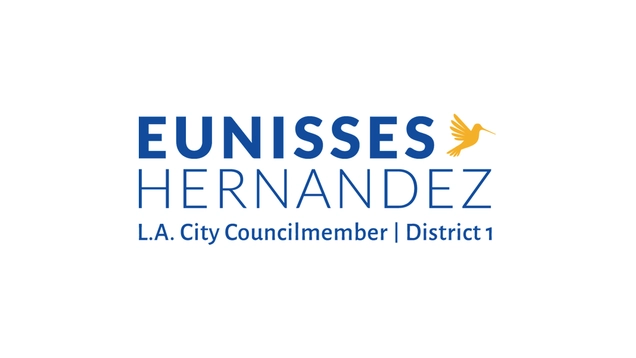
LOS ANGELES — Today, Councilmember Eunisses Hernandez introduced a motion to formally begin the process of designating a Central American Cultural District in the City of Los Angeles, formally acknowledging the contributions of the Central American community in Los Angeles. Councilmember Hernandez was joined by a coalition of leaders of some of L.A.’s most prominent Central American organizations, Councilmember Hugo Soto-Martinez, the Department of Cultural Affairs, the Bureau of Street Services and community members to celebrate the milestone.
There are more than 600,000 Central Americans living in the City of Los Angeles, which is home to the largest Central American population in the country. The community has played a critical role in shaping the cultural, social, and the economic landscape of Los Angeles, particularly Pico Union and Westlake neighborhoods.
“The Central American community is an irreplaceable part of the fabric of Los Angeles,” said Councilmember Eunisses Hernandez. “Today we are bringing over a decade of work to fruition as we formally begin the process of designating a Central American Cultural District that will honor the contributions this community has made in Los Angeles. I am honored to stand alongside this coalition of community leaders and I thank them for their tireless advocacy and service.”
“The Central American community is an integral part of the culture and history of Los Angeles,” said Councilmember Hugo Soto-Martinez. “Establishing this new Central American Cultural District would be an important investment in that community, by the City, as well as an acknowledgment of the tremendous contributions that community has made to our City and shared home.”
"The introduction of the Central American Cultural District marks a significant milestone for our community, recognizing decades of cultural, social, and economic contributions that have shaped Los Angeles mosaic, particularly in Pico Union and Westlake. This district will stand as a living tribute to the memories and history we’ve built here. We thank Councilmember Hernandez for championing this vision, and we look forward to creating a space that celebrates our shared pride and presence for future generations," said Carlos Vaquerano, President & CEO of Clínica Romero.
“We celebrate the motion introduced by Councilmember Hernandez because finally it recognizes the presence of Central Americans in Los Angeles these past half century and our cultural, social, economic and civic contributions to the fabric of the City of Los Angeles,” said Salvador Sanabria, CEO of El Rescate. “We call to all members of the City Council to join in support of the designation of the Central American Cultural District.”
“The Central American Cultural District will be a hub where the next generation of Central American leaders can learn, grow, and lead the fight for justice and equity—not just for Central Americans but for all marginalized communities,” said Jocelyn Duarte, Executive Director of SALEF.
In 2012, a Central American Cultural District Master Plan was developed through feedback from community members and Central American coalitions representing the Westlake-Pico Union area. Now, more than a decade later, the recommendations in this report are being brought to fruition as the City moves to formally recognize the Central American community through the naming of a culturally designated area.
The proposed Central American Cultural District will be primarily located in Council District 1 with some overlap in Council Districts 10 and 13. The proposal directs City departments to identify funding to restore and implement cultural markers and monuments in the proposed district, including the design and installation of gateways that will mark the area.
The Bureau of Street Services will develop a scope of work, cost estimates, and assist with procurement, schedules, installation, and completion of the project. The project is estimated to take 4 - 5 years and will use both public and private funding sources.
CLICK HERE for B-Roll and photos from the press conference.
###